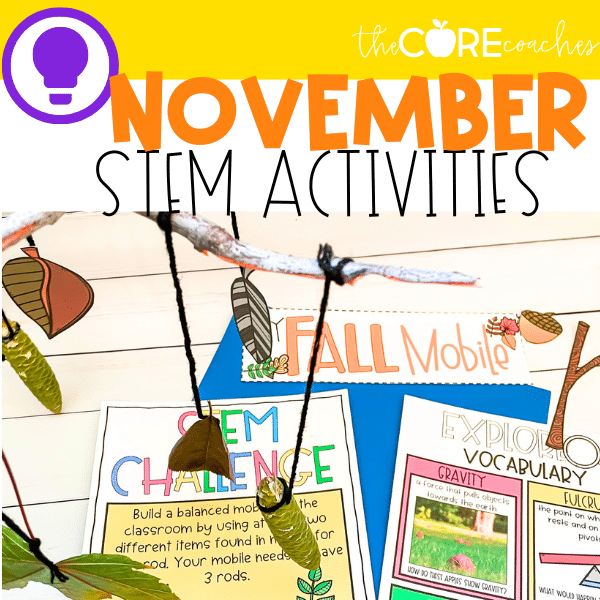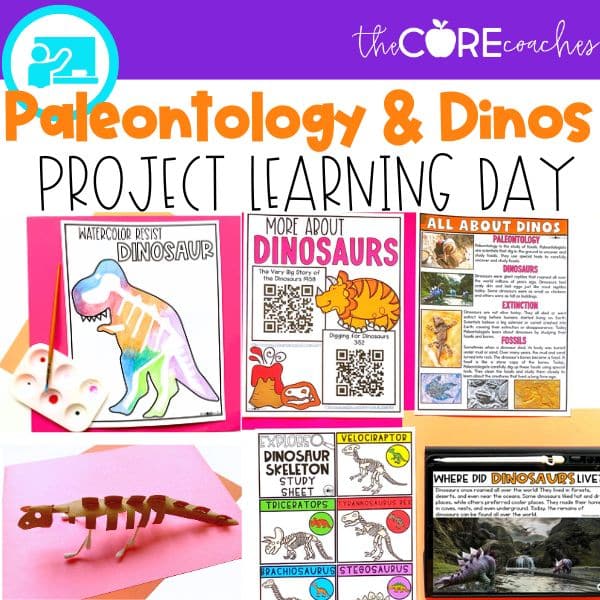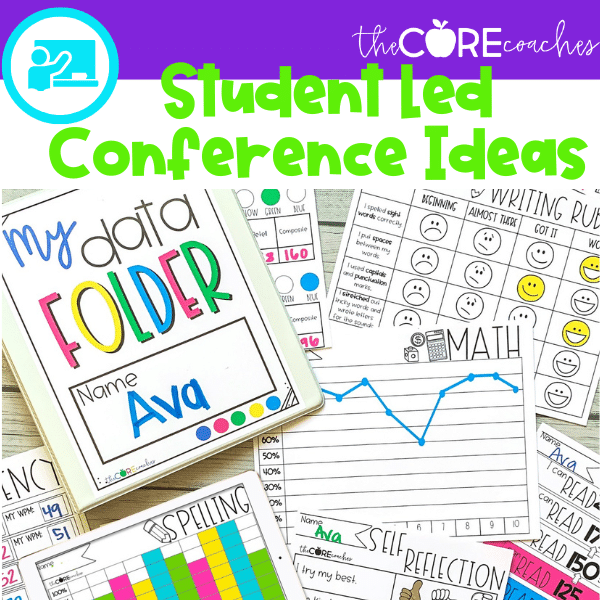The best curriculum for preschool children

From kindergarten through high school, teachers are told what subjects and content to cover each year. Whether provided by the state or school board, there are clear guidelines as to what the expectations are for each school year. What about those two years prior to kindergarten though?
Preschool teachers tend to have more flexibility with their curriculum. However, this can vary depending on if you teach at a preschool with a core curriculum or at a non-traditional preschool.
Wherever you may teach, your goal as a pre-k teacher is most likely to help prepare children socially AND academically for kindergarten. This means that you want to know what the best curriculum is for your students. Check out our preschool curriculum here.
There is an ongoing debate about what the best curriculum is for preschool kids. Some believe whole child learning is best; however, others believe pre-k students should be focusing on individual academics.
What if there was a curriculum that addressed the goals of both whole child learning and a focus on academics? There is, STEM!
Keep reading to learn what STEM is, why STEM is important for pre-k children, and how to easily teach STEM in your classroom!
What is STEM?
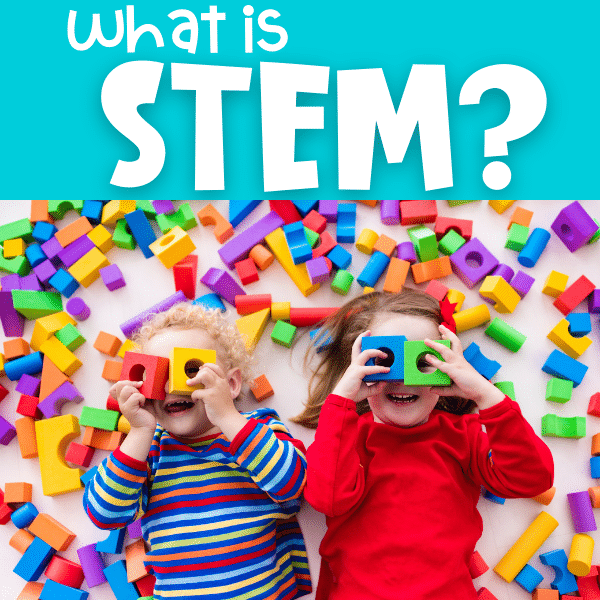
You probably already know that STEM stands for science, technology, engineering, and mathematics.Where did this term come from though? Why has it become so important in schools? Why are preschool teachers curious about STEM?!
The term originated in the 1990s from the National Science Foundation. However, it wasn’t until around 2011 that it became a buzzword in education. This new buzz around STEM in schools was a result of a new push for students to be ready for the 21st Century.
In addition to the traditional STEM curriculum, STEAM has made a name for itself in education. This is a traditional STEM focus with the addition of Art.
While STEM programs were initially implemented in secondary schools, they quickly made their way into elementary schools and now, preschools.
So what does STEM (or STEAM) actually mean in the context of school?
The ideal STEM lessons include elements from at least two of the four content areas: science, technology, engineering, math. Sometimes, they even include elements of art and literacy. In addition, STEM in the classroom connects students to the real world and engages them in hands-on activities to solve real world problems.
Many STEM programs in older grades focus heavily on the technology content. However, in younger grades we have found more success in focusing on the exploration of science, engineering, and math – without technology!
In a digital age this may sound odd to not put as much emphasis on technology, but we feel like it is actually more engaging for students when it’s not included. Many preschoolers are more familiar with technology than some adults; therefore, giving them a hands-on project to create with good old paper and glue can be a great variation on “technology!”
Why is STEM important for Preschool?

Science? Technology? Engineering? Math?! Why would you need to teach these subjects to three and four year olds?! Moreover, can you teach STEM to preschoolers?
Teaching science, technology, engineering and math in preschools may seem over the top. However, these young children are the perfect group for STEM!
Preschoolers are growing up more and more with technology as the primary focus in the world; therefore, implementing ideas of STEM from a young age engages them in a world they are familiar with and prepares them with skills they will need in the future.
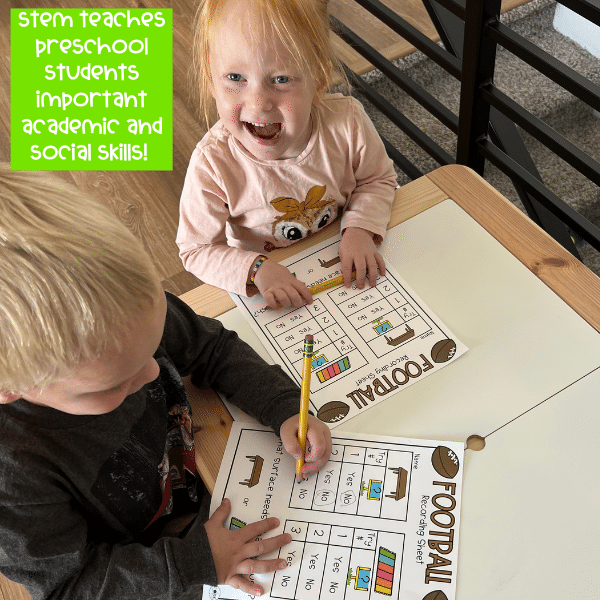
STEM teaches preschool students important academic and social skills!
- Engage in critical thinking
- Learn to collaborate with their peers
- Learn how to solve problems
- Develop essential math and science skills
- Increase literacy
- Develop their creativity
How do you Teach STEM in Preschool?
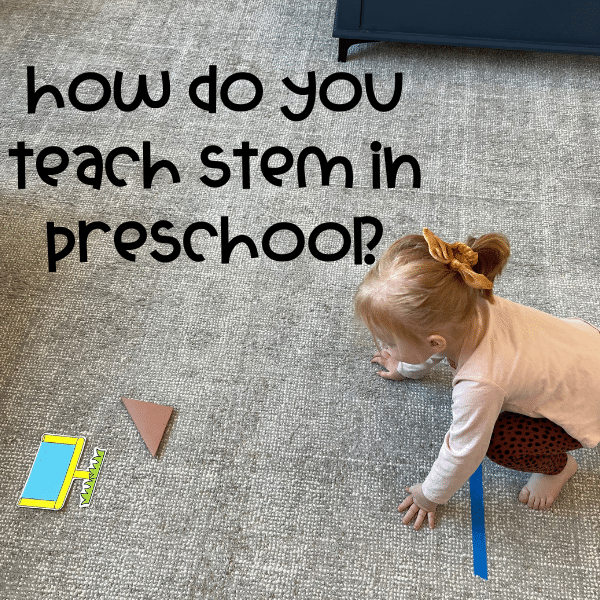
Teaching STEM to three and four year olds is actually easier than you may think!
To create a STEM activity for preschoolers, begin with a problem or situation. STEM is all about problem solving through the use of science, technology, engineering, and math. Therefore, you always want to begin with a situation that needs a solution. The best problems are ones that are fun and engage students.
One of our favorite ways to create problems students can relate to is to center them around events like holidays or interests most students can relate to in their own lives. Read more about November Preschool STEM activities and December Preschool STEM activities from our blog.
Here are some of our favorite problems from our November and December themed preschool STEM resources:
-
- You’re in charge of scoring the extra points for your football team. To win the points, you need to use your fingers to push the football so it slides across different surfaces to land in the goalpost.
- Santa’s reindeer are planning to quit on Christmas Eve! Santa needs to deliver presents to the children and has no way to pull his heavy sleigh.
- You are so excited for the holidays! You want to create a paper countdown chain to count the days until Christmas arrives!
The next step is to give students a clear project to build or create. This will be something that helps solve the problem. For example, in our Santa’s Sleigh activity students have to make a sleigh for Santa that can hold presents and slide a long distance down a hill without stopping. This is to solve the problem of the reindeer quitting on Christmas Eve.
STEM activities are always best when they have several clear steps. We also believe that it helps young children when they follow similar steps each time. Therefore, aim to create a series of steps that your students will follow for every single STEM activity.
This also makes it much easier for you to plan! Once you know the series of steps, you just modify them for each problem!
In all of our preschool STEM activities, students go through the same seven step process:
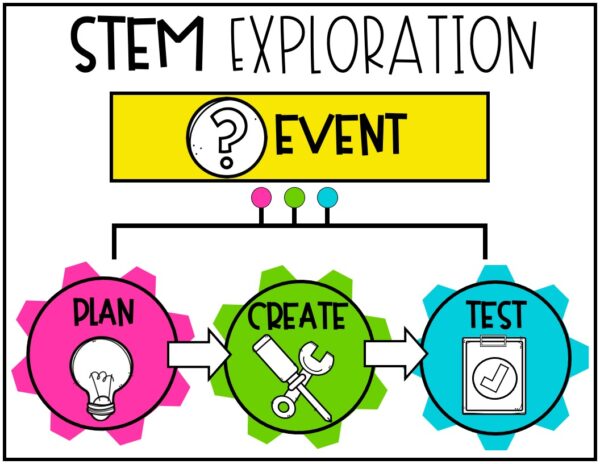
- EVENT: present the event or problem to the class
- STEM Exploration: present what they will create to solve the problem
- EXPLORE: discuss vocabulary and other background to help solve the problem
- PLAN: as a class discuss ideas on how to create the solution
- CREATE: give students time to create and build their solution
- TEST: have students test what they made!
- REFLECT: allow students to reflect on their process and what they learned.
By following these same steps for every single STEM activity, students know the exact process to expect. This helps them know what to plan for when you do a STEM activity. It also helps develop independent learners because they will become more confident in doing each step on their own the more you do these activities.
How often do you need to teach STEM in preschool?
There is no right number of STEM lessons that you need to do in your classroom. How frequently you use STEM will depend on your teaching style and your curriculum calendar.
You could include a STEM activity every week, every other week, or once a month! This may vary from week to week as well, depending on the time of year.
One suggestion is to look at your theme for the month and see what STEM activity would fit well with that theme. You can use the activity as either an introduction to that theme or as a culminating activity. STEM challenges are great summative assessments!
Once you and your students are familiar with your STEM protocols, add in more each month. If your students really enjoy these types of activities you may even do one a week!
Preschool STEM Activities
Here are a few of our preschool STEM activities that we created around themes for the month of December. These are all examples of lessons that could be used on their own or as part of a month-long STEM program.
December STEM Activities
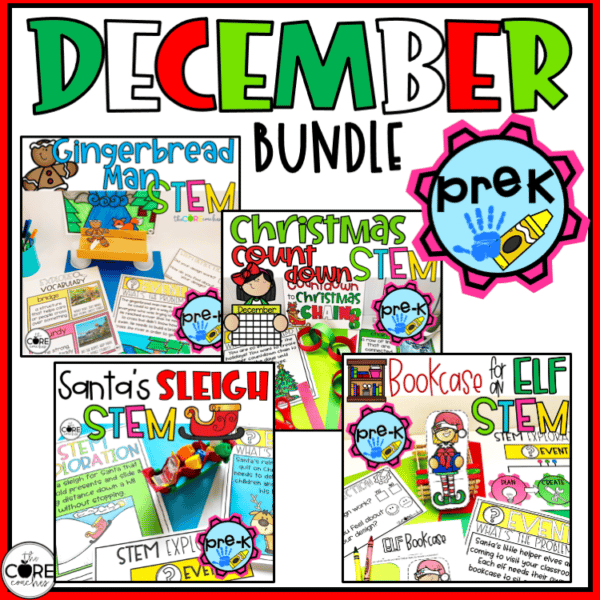
Elf STEM
Event (problem): Santa’s little helper elves are coming to visit your classroom. Each elf needs their own shelf to sit on while they visit.
STEM Exploration: Build a sturdy shelf for Santa’s little elf to sit on while visiting your classroom.
Gingerbread Man STEM
Event (problem): The gingerbread man ran as fast as he could to get away from everyone who was trying to eat him. He reached a river that he needed to cross but didn’t know how to swim.
STEM Exploration: Build a bridge for the gingerbread man to cross the river.
Christmas Countdown STEM
Event (problem): You are so excited for the holidays! You want to create a paper countdown chain to count the days until Christmas arrives!
STEM Exploration: Create a countdown change out of paper to countdown the days until Christmas
While there are several learning theories that come and go, STEM is one that has proven it is here to stay. So, while it may be a new type of instruction for you as a preschool teacher we encourage you to give it a try. The great thing about pre-k STEM lessons is that they are so versatile, you can truly create a STEM activity for ANY topic you teach.
If you want more support on getting started, checkout more of our Pre-K STEM resources on Teachers Pay Teachers!
If you’re looking for more STEM activities for Preschool you can visit our shop or you may be interested in these blog posts such as:
And, sign up for our preK newsletter filled with helpful teaching tips and freebies for early childhood.




